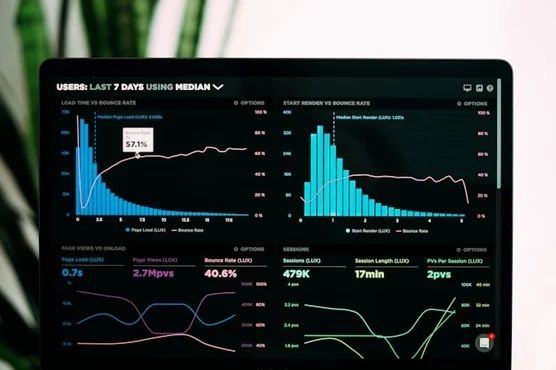From Data to Decisions: Leveraging Reporting Dashboards for Growth

Summary: Discover how HubSpot CRM’s reporting dashboards empower businesses to optimize sales performance, analyze marketing campaigns, and maximize ROI.
In today’s rapidly evolving business landscape, the ability to make informed, data-driven decisions quickly is more crucial than ever. With the advent of powerful Customer Relationship Management (CRM) platforms like HubSpot, Salesforce, and Marketo, business owners now have access to sophisticated reporting dashboards that provide valuable insights at a glance.
These dashboards serve as a bridge between data and actionable strategies, empowering firms to optimize their marketing plans, drive growth, and maximize return on investment (ROI) by evaluating sales performance and analyzing marketing efforts.
By leveraging the capabilities of these CRM platforms, businesses can not only streamline their operations but also gain a competitive edge in a crowded marketplace. The key to success lies in harnessing the potential of data dashboards to unlock valuable insights and make strategic decisions that propel the business forward.
In this post, we will explore the strategies and best practices that businesses can employ to build and utilize data dashboards effectively, ultimately improving business outcomes and enhancing profitability.
Harnessing the Potential of Dashboards
At their core, CRMs are designed to store customer data and improve customer interactions at all levels. They enable personalized engagement and provide valuable insights to support decision-making. These platforms act as a central hub for all customer-related information, allowing businesses to track interactions, preferences, and behavior effectively.
By utilizing data dashboards within CRMs, brands can gain a comprehensive overview of their customer base, segment audiences, and tailor marketing campaigns to specific target groups. This level of personalization not only enhances customer satisfaction but also increases the likelihood of conversions and repeat business, ultimately leading to a higher return on investment.
KPI dashboards offer advantages that go beyond monitoring progress toward objectives. Here are several primary benefits:
- Comprehensive Summary: KPI dashboards thoroughly analyze an organization’s performance for viewers. Dashboards facilitate analyzing and interpreting essential metrics by visually organizing and displaying data in an appealing way.
- Enhanced Decision-Making: Accessing precise and current data is crucial for making well-informed business choices. KPI dashboards consolidate essential operational data, increasing accessibility and empowering decision-makers to make prompt decisions based on real-time insights.
- Real-Time Analysis: KPI dashboards allow firms to monitor important performance data instantly through real-time analysis. Real-time visibility enables proactive decision-making and helps teams achieve improved business outcomes.
How to Identify Key Performance Indicators for Boosting Sales and Conversions
Ultimately, the effectiveness of your dashboards hinges on the quality of the data they track. Key Performance Indicators (KPIs) play a crucial role in management and performance evaluation, helping measure progress, pinpoint areas for improvement and foster success.
Identifying the right KPIs that directly impact sales and conversions from a plethora of metrics can be a challenging task. Here are the initial steps to guide you through this process:
1. Consider your company’s growth phase: Various phases of business development necessitate distinct KPIs. Start-ups may concentrate on measures to validate their business model. In contrast, well-established organizations may emphasize Customer Lifetime Value or cost-per-acquisition metrics. Customize your KPIs to align with your business’s current stage and specific challenges and possibilities.
2. Determine both lagging and leading performance indicators: Lagging and leading indicators are qualifiers that report on your business’s health from two different perspectives. Leading indicators predict future performance and help drive your daily initiatives while lagging indicators reflect past performance to assess historical performance and help shape your long-term strategy. Tracking both indicators carefully enables you to understand your business’s performance and make informed decisions to promote growth. For example, if you’re tracking Total Sales Revenue (which is a lagging indicator) while monitoring Sales Opportunities or Conversion Rates (which is a leading indicator), you can gain important insights into future business performance.
3. Concentrate on a select few critical metrics: Avoid the temptation of monitoring an excessive number of KPIs, which can lead to paralysis by analysis. Concentrate on a few specific KPIs that align closely with your business objectives. Strive for an equilibrium between quantitative and qualitative measures to understand your performance thoroughly. Maintaining targeted and controlled KPIs can prevent data overload and guarantee that your team remains aligned with common objectives.
Examples of Sales and Conversion Key Performance Indicators
Now that we have covered what you need to consider to select the best KPIs for your business, let’s delve into some examples of KPIs that are directly linked to boosting sales and enhancing conversions:
- Monthly Sales Growth: This KPI calculates the percentage change in sales income between consecutive months and serves as a crucial metric for measuring the overall growth trajectory of your business. Tracking this metric allows you to identify trends, assess the effectiveness of your sales strategies, and make informed decisions to drive revenue growth.
- Conversion Rate: The conversion rate is the proportion of leads that successfully convert into paying customers. By monitoring this KPI, you can evaluate the success (or potential shortcomings) of your marketing and sales efforts. A high conversion rate indicates that your strategies are resonating with your target audience, while a low conversion rate may signal the need for adjustments in your approach.
- Client Acquisition Cost (CAC): The CAC metric measures the average amount of money it takes to acquire a new client, factoring in all related marketing and sales costs. Understanding your CAC is essential for assessing the efficiency of your customer acquisition strategies and optimizing your marketing budget. This metric is closely tied to Customer Lifetime Value (CLV) and can help you determine the long-term profitability of acquiring new customers.
- Customer Lifetime Value (CLV): CLV is a predictive metric that estimates the total revenue a customer is expected to generate for your business throughout their partnership with you. By calculating CLV, you can identify high-value customers, tailor your marketing and sales tactics to maximize their value and foster long-term relationships that drive sustainable business growth.
By incorporating these key sales and conversion KPIs into your data dashboards, you can gain valuable insights into your business’s performance, identify areas for improvement, and make data-driven decisions that drive revenue growth and enhance customer satisfaction.
Examples of Key Performance Indicator Dashboards
Examples of Key Performance Indicator dashboards in action showcase the power of data visualization in tracking and evaluating marketing performance. Let’s look at some real-world examples to demonstrate how KPI dashboards can drive marketing ROI and inform strategic decision-making for businesses:
- Subscription Model Dashboard: This dashboard emphasizes indicators concerning subscription-based businesses, including monthly and yearly income and churn rate, to offer insights into client retention and revenue production.
- Deals Closed Dashboard: This dashboard offers a detailed summary of marketing and sales performance, showcasing key metrics around Marketing Qualified Leads (MQL) versus Sales Qualified Leads (SQL). This helps businesses synchronize marketing strategies with sales objectives.
- Marketing Leads Dashboard: This dashboard tracks marketing leads and conversions to analyze lead generation effectiveness and conversion rates.
In Conclusion
KPI dashboards are essential tools for monitoring business health and analyzing marketing ROI. They display critical performance data and allow businesses to evaluate performance, make educated decisions, and pinpoint areas for development. By utilizing appropriate KPI dashboard software (such as HubSpot’s Dashboard and Reporting software) and implementing best practices, businesses can confidently oversee marketing performance and stimulate business expansion.
Do you want to improve the efficiency of your sales team or enhance your CRM data? Need help unlocking the power of dashboards for your business? Then you should speak with your WSI digital marketing consultant for additional details on how to maximize your reporting.
About the Author
Rick spent 20 years in the insurance industry in finance, primarily developing reporting platforms for B & C stakeholders. His ability to speak to consumers of data (managers and analysts) and translate their needs to programmers led him to start his own digital marketing agency in 2004 to develop data driven solutions for business owners.
The Best Digital Marketing Insight and Advice
We are committed to protecting your privacy. For more info, please review our Privacy and Cookie Policies. You may unsubscribe at any time.
Don’t stop the learning now!


